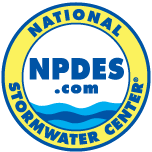What is NPDES?
In 1972 Section 402 of the Federal Water Pollution Control Act (Clean Water Act) created the National Pollutant Discharge Elimination System (NPDES) program. The program gave EPA the authority to regulate discharges into our nation's waters by setting limits on the effluent that can be discharged into a body of water from an operating and permitted facility.
NPDES prohibits discharges of pollutants from any point source into the nation's waters except as allowed under an NPDES permit.
In the years since the adoption of the Clean Water Act, the NPDES program has grown in complexity as Congress amended the Clean Water Act and adopted additional laws such as the Water Quality Act. EPA has since delegated authority to 47 states. Some states personalize the program. Examples are:
LPDES - Louisiana Pollutant Discharge Elimination System
TPDES - Texas or Tennesssee
SPDES - New York (State Pollutant Discharge Elimination System)
Regardless of the acronym, they are all the same program: National Pollutant Discharge Elimination System (NPDES).
Perhaps ironically, read backwards it means the same thing. A System to Eliminate the Discharge of Pollutants Nationally.
